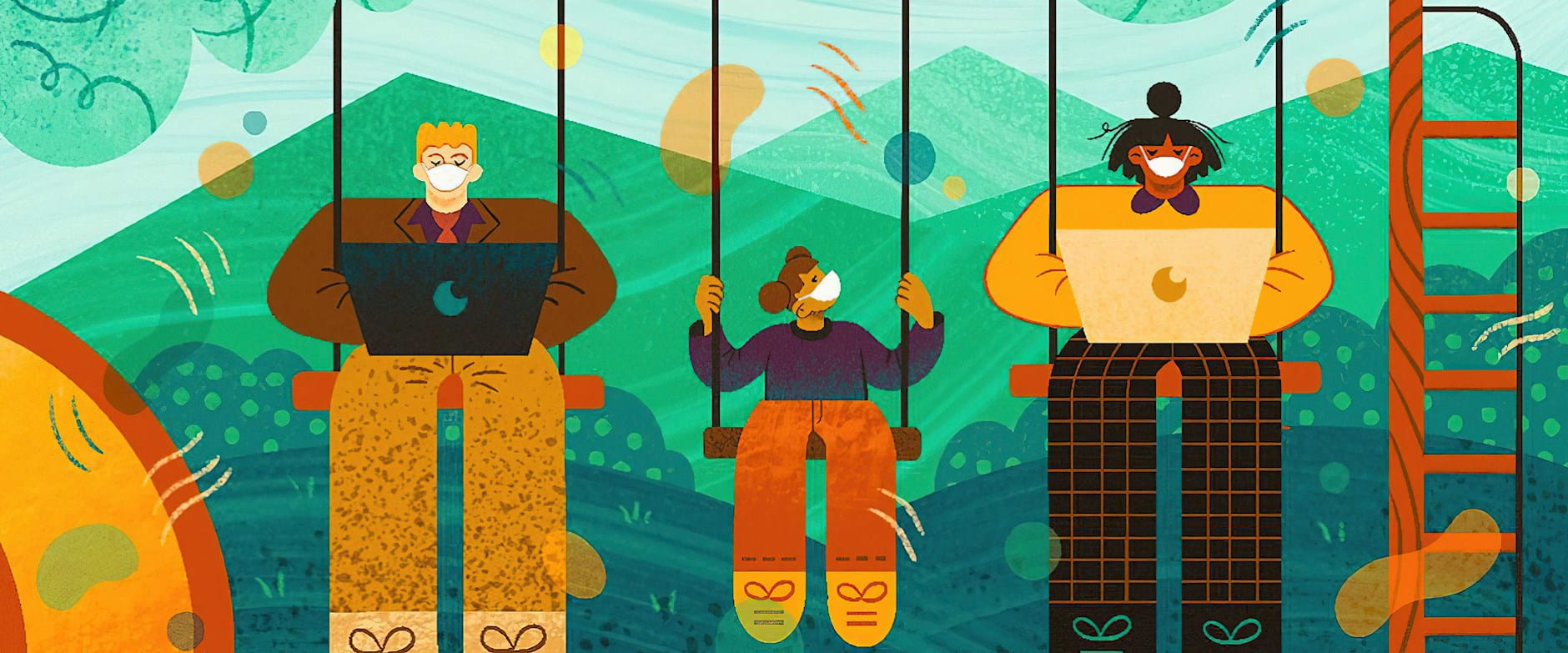There’s a hole in the Trump administration’s plan to reopen the US economy in phases: childcare. Schools and day-care operations come near the tail end of resumption following the COVID-19 pandemic, only after states have reliably demonstrated they can track and treat the disease.
This means 50 million American workers with children younger than 14 will have a serious problem going back to work, according to Chicago Booth’s Jonathan Dingel and Joseph S. Vavra and Northwestern postdoctoral scholar Christina Patterson, who will join the Chicago Booth faculty in July 2020. That’s almost a third of the prepandemic workforce of 160 million.
“Under a policy where young workers return to work while schools remain closed, 35 million workers who are over 55 would not be able to return to work, and another 16 million who are under 55 would be constrained by child-care obligations,” they write.
Parents will have to provide alternate care for their children in order to resume working or delay their return, making economic or career sacrifices that childless peers won’t face, the researchers find. This new dimension to economic inequality will cut across economic classes, educational levels, and industrial settings, their research demonstrates.
“If the way this is handled means those with children are going to have a tough time, it’s going to be a new source of inequality tied to childcare arrangements,” Dingel says. People build their families on the reasonable assumption there will be a functioning marketplace for childcare, he adds.
The researchers analyzed data from the Census Bureau’s 2018 American Community Survey, getting a snapshot of the workforce before the COVID-19 crisis. They estimate that 11 percent of the total US workforce will lack childcare options under the reopening plan. This disproportionately affects younger workers, who are supposed to be at the vanguard of the reopening. Of workers younger than 55, about 40 percent have a child in the household. Families with two wage earners may have to make do with one so that an adult can stay home to provide childcare, the researchers say.
Older workers might step in to help, but even if they all do, there aren’t enough of them to close the childcare gap, the researchers argue. Opening schools concurrently with sending people back to work could reduce these burdens, but the researchers caution that this might not be possible without sacrificing control over the pandemic.
“We are making no attempt to evaluate any public-health benefits of school closures or make any assessment of when schools should be reopened,” they write. “Public-health policies that mitigate the spread of the virus likely have high returns for the ultimate shape of any economic recovery. We instead simply note that discussions of returning to work ought to include discussion of returning to school.”
Jonathan Dingel, Christina Patterson, and Joseph S. Vavra, “Childcare Obligations Will Constrain Many Workers When Reopening the US Economy,” Becker Friedman Institute working paper, April 2020.
Your Privacy
We want to demonstrate our commitment to your privacy. Please review Chicago Booth's privacy notice, which provides information explaining how and why we collect particular information when you visit our website.
